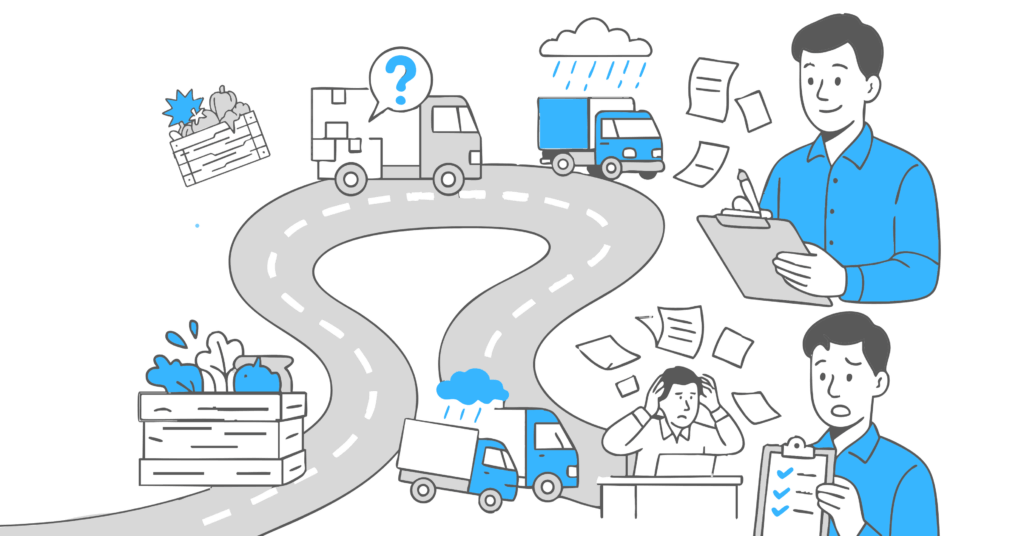The 5 Most Common Logistics Insurance Claims and How to Avoid Them

In trucking and logistics, every mile and every claim matters. Claims are not only financial hits on the balance sheet, they also take up time, slow operations, and push premiums higher. The good news is that many of the most common claims can be prevented with the right systems and habits in place. For CEOs and fleet leaders, knowing what claims appear most often, and how to stop them, is one of the fastest ways to protect margins and build a stronger reputation.
Lessons From the Road
A freight company in Florida had repeated claims for cargo damage. Pallets shifted, fragile items broke, and insurance costs kept rising. Instead of treating it as part of the job, leadership made changes. Drivers were retrained, a loading checklist was introduced, and regular inspections became routine.
The results were dramatic. Within a year, claims dropped by 70 percent. Deliveries became more reliable, insurance costs went down, and the fleet’s reputation with shippers improved.
This example proves a simple truth: claims are not random accidents. They often follow patterns, and with the right approach, those patterns can be changed.
The Big Five: Claims That Cost Fleets the Most
While every business faces unique risks, most trucking insurance claims fall into a familiar group:
- Damage to cargo: Often caused by poor loading or failure to secure freight properly.
- Accidents and auto liability: Even skilled drivers face unpredictable road conditions.
- Theft: Rest stops, parking lots, and unsecured yards are common targets.
- Equipment failure and property damage: Breakdowns or warehouse accidents that cause costly delays.
- Worker injuries: From lifting accidents to slips and falls, safety gaps lead to people getting hurt.
Each of these categories carries high costs, but each also has clear ways to prevent them. By targeting the top five, fleets can cut risks significantly.
How to Prevent the Most Common Claims
The good news is that lowering risk does not require massive changes. Small, consistent steps make a big difference:
- Use structured checklists: Ensure loading and securing steps are consistent across all drivers and shifts.
- Invest in driver training: Safety refreshers and in-cab tools reduce accident risks.
- Strengthen security: GPS tracking, secured parking, and clear policies deter theft.
- Stay ahead on maintenance: Preventive servicing avoids breakdowns before they become claims.
- Protect your team: Provide proper gear, ergonomic processes, and routine safety checks to reduce injuries.
These measures do more than prevent losses. They create a culture of safety and discipline that protects people, goods, and profit.
Turning Risk Into Resilience
Fleets that treat claim prevention as a priority do more than cut costs. They strengthen relationships with shippers, improve service, and build stronger cases with insurers. Lower claim rates often lead to better renewal terms, steadier premiums, and fewer disruptions. Every claim avoided is money saved, time protected, and reputation improved.
FAQs on Logistics Insurance Claims
What are the most common claims for logistics insurance?
- The top five are cargo damage, accidents and auto liability, theft, equipment or property damage, and worker injuries.
How can fleets reduce cargo damage claims?
- Using checklists, proper loading, training drivers, and conducting regular inspections are effective ways to reduce claims.
Why do experienced drivers still get into accidents?
- Road conditions, weather, and other drivers can create unpredictable hazards. Ongoing safety training helps reduce risks, but cannot remove them completely.
Can fewer claims lower the cost of insurance?
- Yes. Fleets with lower claim rates often get better renewal terms and more stable premiums from insurers.
What role does maintenance play in preventing claims?
- Preventive maintenance lowers the risk of breakdowns and failures, reducing property damage and delay-related claims.
Final Thoughts
Logistics insurance claims are part of the business, but they do not have to be frequent or costly. With strong systems, ongoing training, and a focus on safety, fleets can reduce risks, protect margins, and build lasting trust with both shippers and insurers.
